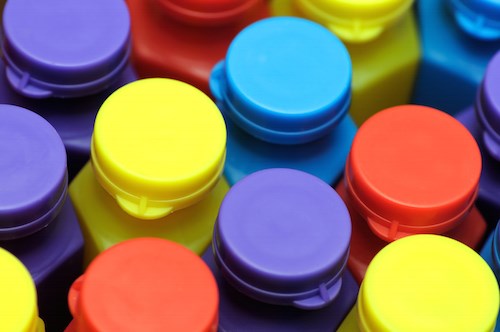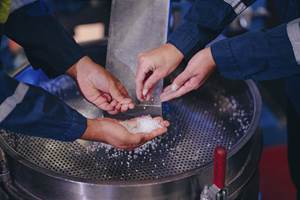Global Oversupply of PE, PP Better for Processors, Tougher on Producers
As we approach the mid-year mark, IHS addresses how the competitive landscape is changing for global polyolefins.
As we approach the mid-year mark, IHS addresses how the competitive landscape is changing for global polyolefins.
Dull, is one thing pricing trends for polyolefins is not, particularly in the last few years as North American producers for both PE and PP became the leaders in low-cost production and enjoyed quite excellent profit margins. “The surge of shale gas derived feedstock has enabled North American polyethylene and polypropylene producers to achieve a level of cost-competitiveness that is unprecedented, since the Middle East has traditionally served as the world’s lowest-cost producer for these products,” says Nick Vafiadis, global business director of polyolefins and plastics at Houston-based IHS Chemical.
Meanwhile, a surge in new plastics chemical capacity coming from North America, the Middle East and China is driving the global market for PE and PP to oversupply, which will pressure margins for producers and change the global competitive landscape, according to IHS. Within the 2015-2020 timeframe, IHS has estimated that nearly 53 billion/lb of added new PE capacity will come on stream—more than one-third of which, about 18 billion, will come from the U.S. This will significantly increase the U.S. net-export position for PE and PP and other chemicals, rebalancing the global chemical trade flows that have favored the Middle East for decades.
Says Vafiadis, “In the near-term, this excess capacity is good news for North American converters, who will be more competitive on a global basis due to the increased competition associated with the PE capacity expansions. However, on the producer side, economics will be challenged in the near-term as global capacity expansions exceed demand growth and pressure margins.”
Beyond North America, China is also growing as a key, low-cost provider of PE, thanks to its production additions from coal-to-olefins technology. China is expected to add about 37.5 billion/lb of new PE/PP capacity within the five-year timeframe, which will drive further market volatility, according to Vafiadis. “The U.S. and China are now competing with the Middle East for global PE/PP market share, which should have significant impact on pricing and margins, so at IHS, we expect to see big changes ahead for the global industry…there will be significant imbalances as we see North America and the Middle East both add more PE capacity than is warranted for their domestic markets, so exports will be key for producers,” he says.
In Europe, imports from the Middles East in 2016 so far have surpassed 2015 numbers, as the region continued to see strong demand and offered attractive net-backs for Middle East producers. HDPE import figures for January and February 2016 overall, were the highest of the last eight years at 326 million/lb, while exports were the lowest for the same period at only 92.5 million/lb. According to IHS, a similar but less pronounced trend is occurring for other PE grades as well.
“According to our IHS Chemical forecasts, we expect Asian pricing for PE to remain depressed for the remainder of 2016, and with European producers giving little margin away, this will mean netbacks from the Middle East to Europe will remain attractive in the coming months. The net result will mean PE imports will continue to arrive in Europe at relatively high levels from the Middle East,” Vafiadis says.
All this and more, will be discussed by IHS experts at the Annual Polyethylene/Polypropylene Chain Global Technology and Business ForumthPEPP 2016: 24, June 1-3, 2016, at the Swissotel Zurich in Switzerland. “One of the key issues of discussion will be the next wave of polymer capacity additions worldwide, and the ripples it will have throughout the supply chain. The additional supply will result in major changes in market dynamics, increasing trade flows and driving the need for improved supply chain management. We will also explore evolving consumer trends and regulations, which mean increasing demand for enhanced product quality in several end uses such as packaging and automotive,” says Vafiadis.
Low oil prices could make the environment even more attractive for new plastics applications, which will drive new innovations in PE/PP technology and applications, ventures Vafiadis.
Search for PE and PP resins in PT’s materials database.

Related Content
Prices Up for All Volume Resins
First quarter was ending up with upward pricing, primarily due to higher feedstock costs and not supply/demand fundamentals.
Read MorePrices of PE, PP, PS, PVC Drop
Generally, a bottoming-out appears to be the projected pricing trajectory.
Read MorePrices for PE, PS, PVC, PET Trending Flat; PP to Drop
Despite price increase nominations going into second quarter, it appeared there was potential for generally flat pricing with the exception of a major downward correction for PP.
Read MoreFirst Quarter Looks Mostly Flat for Resin Prices
Temporary upward blips don't indicate any sustained movement in the near term.
Read MoreRead Next
Making the Circular Economy a Reality
Driven by brand owner demands and new worldwide legislation, the entire supply chain is working toward the shift to circularity, with some evidence the circular economy has already begun.
Read MorePeople 4.0 – How to Get Buy-In from Your Staff for Industry 4.0 Systems
Implementing a production monitoring system as the foundation of a ‘smart factory’ is about integrating people with new technology as much as it is about integrating machines and computers. Here are tips from a company that has gone through the process.
Read MoreSee Recyclers Close the Loop on Trade Show Production Scrap at NPE2024
A collaboration between show organizer PLASTICS, recycler CPR and size reduction experts WEIMA and Conair recovered and recycled all production scrap at NPE2024.
Read More


























